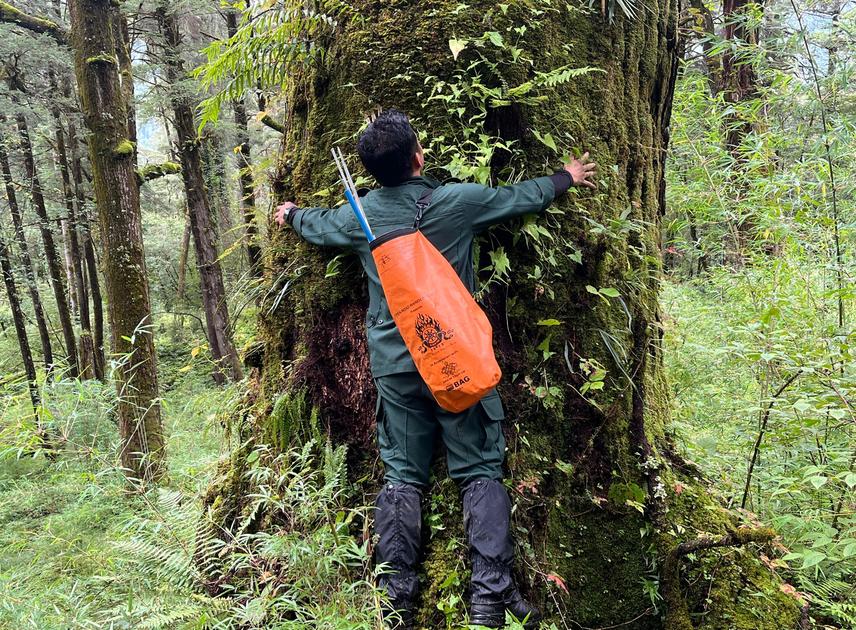Chungdu Tshering
This project aims to investigate the habitat distribution, ecological significance, and climate resilience of Picea brachytyla (commonly known as the Himalayan spruce) in Bumthang, Bhutan. Given the increasing concerns about climate change impacts on Bhutan’s high-altitude forests, this study will use dendrochronological methods to analyze growth patterns, assess climate variability, and evaluate the species’ adaptability to changing environmental conditions. The project will also include habitat mapping and species identification, using Maxent modeling to predict the species’ potential distribution under future climate scenarios.

Project Picture. ©Chungdu Tshering, UWIFoRT.
Objectives:
1. Habitat Mapping and Distribution:
• Map the current distribution of Picea brachytyla in Bumthang, using field surveys and remote sensing techniques.
• Predict potential habitat areas using Maxent modeling based on environmental variables.
2. Dendroclimatological Analysis:
• Collect core samples from Picea brachytyla trees to construct tree-ring chronologies.
• Assess past climate conditions and tree growth responses to temperature and precipitation variability.
3. Climate Change Impacts and Forest Resilience:
• Analyze how the species has responded to historical climate changes.
• Predict how climate change could affect the future distribution and growth of Picea brachytyla, with implications for forest management and conservation.